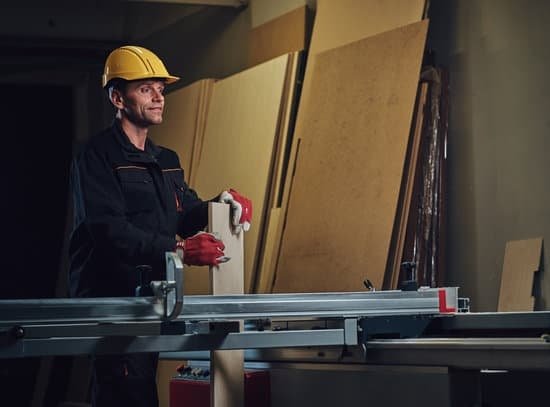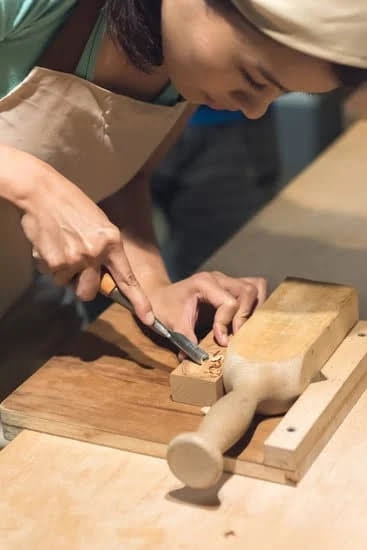Are you interested in learning how to make jewelry box woodwork? Woodworking is a timeless art that allows individuals to create beautiful and functional pieces using various techniques and tools. In this guide, we will explore the basics of woodworking and delve into the intricate process of crafting a jewelry box from scratch.
Woodworking involves utilizing a combination of skills, creativity, and precision to bring your vision to life. To embark on your jewelry box woodwork project, you will need to familiarize yourself with the essential tools and materials required for the task. From saws and sanders to clamps and chisels, having the right equipment is crucial in achieving professional results.
When it comes to woodworking projects like making a jewelry box, selecting the appropriate type of wood is key in achieving a refined finish. Different types of woods offer unique characteristics in terms of color, grain pattern, durability, and workability. Understanding how each wood species behaves will help you choose the perfect material for your project. Stay tuned for more insights on choosing the right wood for your jewelry box woodwork endeavor.
Understanding the Basics
Woodworking is a creative and fulfilling art form that allows individuals to craft beautiful and functional pieces from wood. When it comes to creating a jewelry box through woodworking, having the right tools and materials is essential for a successful project. Whether you are a seasoned woodworker or just starting out, understanding the basics of the tools and materials needed for jewelry box woodwork is crucial.
Tools for Jewelry Box Woodwork
One of the most important aspects of woodworking is having the right tools for the job. For jewelry box woodwork, some essential tools include a saw (such as a table saw or handsaw), a drill with various bits, sandpaper in different grits, clamps to hold pieces together, measuring tape, marking tools like pencils or markers, and safety equipment like goggles and gloves. Additionally, specialized tools such as chisels and carving knives may be needed for intricate details.
Materials for Jewelry Box Woodwork
Choosing the right wood for your jewelry box is also critical in achieving a beautiful final product. Some popular options for woodworking include hardwoods like oak, cherry, walnut, or maple, which are durable and provide a classic look. Softwoods like pine or cedar are also commonly used for their affordability and ease of working with. When selecting wood for your project, consider factors such as grain pattern, hardness, color variation, and overall aesthetic appeal to ensure the best results.
Additional Materials and Supplies
In addition to wood, there are other materials and supplies that may be necessary for jewelry box woodwork. These can include hardware such as hinges, clasps, knobs or handles; adhesives like glue or epoxy; finishing products such as stain or varnish; felt or fabric for lining the inside of the box; and decorative elements like inlays or engravings.
By gathering all necessary tools and materials before starting your project, you can ensure a smooth and successful woodworking experience in creating your own unique jewelry box masterpiece.
Choosing the Right Wood
When it comes to creating a jewelry box through woodworking, one of the most crucial decisions you will make is choosing the right wood for your project. The type of wood you select can greatly impact the final look, durability, and overall aesthetic appeal of your jewelry box. There are a variety of factors to consider when selecting the perfect material for your project, including the wood’s hardness, color, grain pattern, and workability.
Hardness and Durability
One of the first things to consider when choosing wood for your jewelry box is its hardness and durability. Hardwoods such as oak, cherry, maple, and walnut are popular choices for furniture and woodworking projects due to their strength and ability to withstand wear and tear over time. Softwoods like pine and cedar may be more prone to dents and scratches but can still be suitable for smaller projects like jewelry boxes.
Color and Grain Pattern
The color of the wood you choose can have a significant impact on the overall look of your jewelry box. From light blond woods like birch or maple to dark rich woods like mahogany or ebony, there are endless options to choose from. Consider not only the color but also the grain pattern of the wood – whether it is straight-grained or has unique figuring like burls or spalting.
Workability and Finishing Considerations
Another important factor to keep in mind when selecting wood for your jewelry box is its workability. Some woods are easier to cut, shape, sand, and finish than others. For beginners, softer woods like pine or poplar may be more forgiving during the woodworking process.
Additionally, consider how well different woods take stains, paints, or finishes if you plan on adding a personalized touch to your jewelry box. By taking into account all these factors when choosing the right wood for your project, you can ensure that your handcrafted jewelry box turns out beautifully crafted and visually appealing.
Design Inspiration
When it comes to making a jewelry box through woodworking, the design possibilities are endless. Your creativity can truly shine as you envision and create a unique piece that reflects your personal style. Here are some creative ideas to inspire your next jewelry box project:
1. Inlay Designs: Incorporating intricate inlay designs into your jewelry box can add a touch of elegance and sophistication. Consider using contrasting woods or even other materials like metal or shell to create beautiful patterns or images on the lid or sides of the box.
2. Hidden Compartments: Adding hidden compartments within your jewelry box can not only provide extra storage space but also add an element of mystery and intrigue to your design. Think about creating sliding panels, secret drawers, or compartments that are revealed with a hidden mechanism.
3. Mixed Materials: Experimenting with mixed materials can result in a truly unique and eye-catching jewelry box. Combine wood with materials like glass, leather, or even fabric to create interesting textures and visual interest in your design.
Remember, the key to creating a successful and visually appealing jewelry box is to let your imagination run wild and think outside the box (pun intended). Don’t be afraid to try new techniques, experiment with different designs, and really make the project your own.
Before diving into the actual construction process of your jewelry box woodwork project, take some time to sketch out your design ideas, gather inspiration from various sources such as nature, art, or architecture, and plan out how you want your final piece to look. By putting thought into the design phase of your project, you’ll ensure that your finished jewelry box is not only functional but also a true work of art.
Step-by-Step Guide
Woodworking is a rewarding and fulfilling hobby that allows you to create beautiful and functional pieces with your own hands. Making a jewelry box through woodworking can be a fun project that showcases your creativity and craftsmanship. If you’re new to woodworking or looking to expand your skills, learning how to make a jewelry box through woodwork is a great starting point.
To begin your jewelry box woodwork project, you will need the following tools and materials:
- Measuring tape
- Saw (such as a table saw or hand saw)
- Sandpaper
- Wood glue
- Hinges
- Clamps
- Finishing materials (such as stain or paint)
Once you have gathered all the necessary tools and materials, it’s time to choose the right type of wood for your jewelry box. Consider factors such as durability, grain pattern, and overall aesthetic when selecting the perfect material for your project. Popular choices for jewelry boxes include hardwoods like cherry, walnut, or maple, which offer both beauty and strength for long-lasting results.
Now that you have your tools, materials, and wood selected, it’s time to dive into the actual construction process. Follow these steps to build your jewelry box from start to finish:
- Measure and cut your wood pieces according to your desired dimensions.
- Assemble the bottom, sides, and lid of the box using wood glue and clamps.
- Add hinges to attach the lid securely.
- Sand down any rough edges or surfaces for a smooth finish.
- Apply a finishing touch such as stain or paint to enhance the natural beauty of the wood.
By following this step-by-step guide on how to make a jewelry box through woodworking, you can create a stunning piece that not only showcases your skill but also serves as a practical accessory for storing and organizing your precious jewelry items. Enjoy the process of crafting something unique with your own hands and watch as your woodworking skills grow with each project.
Finishing Touches
Woodworking is a meticulous craft that allows for endless possibilities when it comes to creating unique and personalized pieces. When it comes to making a jewelry box, adding finishing touches can truly elevate your creation and make it stand out. There are several ways to add personalized details and enhancements to your woodworking project, ensuring that it reflects your style and creativity.
One popular way to enhance your jewelry box is by incorporating intricate wood carvings or engravings. These details can range from simple patterns to more elaborate designs, depending on your skill level and personal preference. Wood carving tools such as chisels, gouges, and knives can help you achieve the desired effect, adding a touch of craftsmanship and artistry to your piece.
Another way to personalize your jewelry box is by incorporating different types of wood inlay or marquetry. This technique involves using small pieces of contrasting wood to create decorative patterns or images on the surface of the box. By carefully selecting complementary wood species and arranging them in intricate designs, you can create a visually stunning piece that showcases your attention to detail and creativity.
Adding metal hardware such as hinges, knobs, or clasps can also enhance the overall look of your jewelry box. Brass, copper, or nickel hardware can provide a striking contrast against the natural beauty of wood, adding functionality as well as visual interest to your creation. Whether you choose simple and understated hardware or opt for more ornate pieces, these finishing touches can help complete the look of your handcrafted jewelry box.
| Woodworking Technique | Description |
|---|---|
| Wood Carvings/Engravings | Add intricate designs to personalize your jewelry box. |
| Wood Inlay/Marquetry | Create decorative patterns using contrasting wood pieces for a unique touch. |
| Metal Hardware | Incorporate brass, copper, or nickel pieces for added functionality and visual appeal. |
Tips and Tricks
Woodworking is a timeless craft that requires a combination of skill, creativity, and patience. When it comes to making a jewelry box through woodworking, there are specific tips and tricks that can help ensure a flawless experience from start to finish. One key piece of advice is to always measure twice and cut once.
Precision is crucial in woodworking, especially when constructing intricate pieces like jewelry boxes. Taking the time to double-check your measurements before making any cuts can save you from costly mistakes down the line.
In addition to precise measurements, having the right tools and materials is essential for successful jewelry box woodworking. Invest in high-quality tools such as saws, sanders, chisels, and clamps to achieve clean cuts and smooth finishes. When it comes to selecting wood for your project, consider both aesthetics and durability.
Hardwoods like oak, cherry, or walnut are popular choices for jewelry boxes due to their strength and natural beauty. Choosing the right wood will not only enhance the overall look of your creation but also ensure its longevity.
Another expert tip for a flawless woodworking experience is to practice good safety habits in the workshop. Always wear protective gear such as safety goggles, ear protection, and gloves to prevent accidents while working with sharp tools and machinery.
Additionally, keeping your workspace clean and organized can help minimize distractions and improve efficiency during the crafting process. By following these tips and tricks, you can elevate your woodworking skills and create a stunning jewelry box that showcases your talent and dedication.
| Woodworking Tip | Description |
|---|---|
| Measure Twice | Always double-check measurements before cutting to avoid errors. |
| Quality Tools | Invest in high-quality tools for clean cuts and smooth finishes. |
| Safety First | Wear protective gear and keep the workspace organized for a safe woodworking environment. |
Showcasing Your Work
Showcasing your handcrafted jewelry box is just as important as the woodworking process itself. After putting in all the effort to create a beautiful piece, you’ll want to display it with pride and ensure its preservation for years to come. There are various ways to showcase your work, from creating a dedicated display area in your home to entering it into craft shows or competitions.
One popular option for displaying your jewelry box is to incorporate it into your home décor. Consider placing it on a vanity or dresser where it can be easily admired, or use it as a focal point on a shelf or mantel.
You can also showcase your jewelry box in a glass cabinet or shadow box to protect it from dust while still allowing it to be visible. By integrating your creation into your living space, you not only show off your woodworking skills but also add a personal touch to your home.
In addition to displaying your handcrafted jewelry box, it’s essential to take measures to preserve its beauty over time. Regular dusting and cleaning will help maintain the wood’s luster, while using a furniture polish specifically designed for woodwork can enhance its appearance.
If you plan on storing the jewelry box for an extended period, consider wrapping it in acid-free tissue paper and placing it in a protective bag or box to prevent damage. By taking these simple steps, you can ensure that your handiwork remains in pristine condition for generations to come.
Conclusion
In conclusion, learning how to make jewelry box woodwork can be a rewarding and fulfilling experience for anyone interested in woodworking. From selecting the right tools and materials to adding personalized details to your creation, this craft allows for endless creativity and possibilities. By following the step-by-step guide provided in this article, you can create a one-of-a-kind jewelry box that showcases your skills and reflects your individual style.
As you complete your jewelry box woodwork project, take pride in your accomplishment and celebrate the hard work and dedication you put into creating something beautiful with your own hands. Whether you choose to keep your creation for yourself or gift it to someone special, your handmade jewelry box is a testament to your craftsmanship and creativity.
Remember that woodworking is a skill that takes time and practice to master, so continue exploring new techniques and designs to further enhance your abilities.
Moving forward in your woodworking journey, consider expanding your skills by taking on more advanced projects or experimenting with different types of wood and finishes. Attend workshops or classes to learn from experienced woodworkers and gain valuable insights into the craft.
Share your creations with others, whether through social media platforms or local craft fairs, to inspire fellow woodworking enthusiasts and showcase the beauty of handmade wooden pieces. Embrace the endless possibilities of woodworking as you continue honing your skills and creating timeless pieces that will be cherished for years to come.
Frequently Asked Questions
What Is the Best Wood to Make a Jewelry Box?
The best wood to make a jewelry box is highly dependent on personal preference and budget. Popular choices include mahogany, cherry, oak, walnut, and maple due to their durability and aesthetic appeal.
What Are the Steps to Making a Jewelry Box?
The steps to making a jewelry box typically involve selecting the wood, cutting the pieces to size, shaping the components, assembling them using techniques like dovetail joints or box joints, adding hardware like hinges or clasps, polishing the surface, and lining the interior with velvet or felt.
Can I Store Jewelry in a Wooden Box?
Storing jewelry in a wooden box is generally safe as long as precautions are taken. It is important to ensure that the interior of the box is lined with a soft material like velvet to prevent scratches.
Additionally, storing jewelry in individual compartments can help prevent tangling and damage. Regular cleaning and maintenance of the box will also help preserve the quality of the jewelry inside.

Hi everyone! I’m a woodworker and blogger, and this is my woodworking blog. In my blog, I share tips and tricks for woodworkers of all skill levels, as well as project ideas that you can try yourself.





